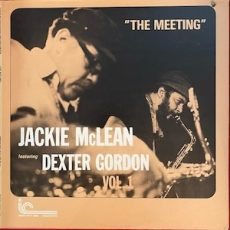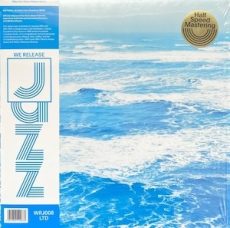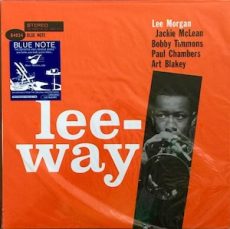
Jazz Poems
WALKING PARKER HOME
Sweet beats of jazz impaled on slivers of wind Kansas Black Morning/First Horn Eyes/ Historical sound pictures on New Bird wings People shouts/ boy alto dreams/ Tomorrow’s Gold belled pipe of stops and future Blues Times Lurking Hawkins/ shadows of Lester/ realization Bronzer fingers–brain extensions seeking trapped sounds Ghetto thoughts/ bandstand courage/ solo flight Nerve-wracked suspicions of never songs and doubts New York altar city/ black tears/ secret disciples Hammer horn pounding soul markson unswinging gates Cultural gods/ mob sounds/ visions of spikes Panic excursions to tribal Jazz wombs and transfusions Heroin nights of birth/ and soaring/ over boppy new ground Smothered rage covering pyramids of notes spontaneously exploding Cool revelations/ shrill hopes/beauty speared into greedy ears Birdland nights on bop mountains, windy saxophone revolutions. Dayrooms of junk/ and melting walls and circling vultures/ Money cancer/ remembered pain/ terror flights/ Death and indestructible existence In that Jazz corner of life Wrapped in a mist of sound His legacy, our Jazz-tinted dawn Wailing his triumphs of oddly begotten dreams Inviting the nerveless to feel once more That fierce dying of humans consumed In raging fires of Love.
BOB KAUFMAN
from Jazz Poems ~ Selected and Edited by Kevin Young
More Posts: book,classic,collectible,history,jazz,library,poet

Requisites
The Meeting, Vol. 1 ~ Jackie McLean Featuring Dexter Gordon | By Eddie Carter
I was looking for something to listen to after dinner a few nights ago when I came across a title I hadn’t heard in a while by two of my favorite saxophonists, Jackie McLean and Dexter Gordon. This morning’s record from the library is The Meeting, Vol. 1 (SteepleChase SCS-1006). It hit the Danish and Japanese stores in 1974 and is the first of two live albums recorded a year earlier on July 20 and 21 at Montmartre Jazzhus in Copenhagen. The front line is Jackie McLean on the alto sax and Dexter Gordon on the tenor sax. The supporting cast for both sets is a magical rhythm section: Kenny Drew on piano, Niels-Henning Ørsted Pedersen on bass, and Alex Riel on drums. My copy is the 1976 U.S. Stereo reissue (Inner City IC 2006).
Side One opens with Jackie’s introduction of the quintet ahead of the rhythm section’s introduction to All Clean by Dexter Gordon. Both horns enter next to introduce the vibrant melody. Dexter goes to work first on a lengthy opening solo. Jackie checks in next and keeps the flame burning. Kenny makes a vigorous contribution next, and then Niels-Henning takes a brisk walk in the following reading. Dexter and Jackie return to have a spirited conversation, leading to the song’s conclusion. Rue De La Harpe by Sahib Shihab begins with the ensemble’s mid-tempo theme. Jackie has the opening chorus and takes command effectively. Dexter flies straight ahead into the following solo, and Kenny keeps things moving with considerable passion until the theme’s climax.
Side Two starts with Sunset, a hauntingly beautiful ballad by Kenny Drew that he initially recorded on Everything I Love. Both horns introduce the song, proceeding to the ensemble’s delicately tender melody. Jackie begins the opening statement gently. Dexter follows with an extremely personal interpretation, and Kenny adds a meaningful comment preceding the theme’s restatement. On The Trail by Ferdé Grofé is the third of five movements in his Grand Canyon Suite. Jackie kicks off the theme’s first chorus. Dexter takes the baton in the second chorus and then makes a distinctive impression on the first solo. Jackie speaks with captivating inspiration in the following reading. Kenny executes a rewarding performance in the closer ahead of the finale.
Nils Winther did double duty on this release. He produced and recorded The Meeting, Vol. 1. The reissue’s sound quality is excellent, with a superb soundstage that transports the listener to a front-row seat in the Montmartre audience as the musicians are performing. Since I have this album in my library, I’ll be on the lookout for its companion, The Source, Vol. 2. If you’re a fan of Jackie McLean and Dexter Gordon, I invite you to attend The Meeting, Vol. 1 on your next record shopping trip. It’s a stellar lineup with great playing from each member of the quintet and a wonderful document of a live set that anyone can revisit anytime the album is on the turntable!
~ Everything I Love (SteepleChase Records SCS-1007), The Source, Vol. 2 (SteepleChase Records SCS-1020) – Source: Discogs.com ~ On The Trail – Source: Wikipedia.org © 2024 by Edward Thomas CarterMore Posts: choice,classic,collectible,collector,history,instrumental,jazz,music,saxophone

Requisites
A Letter From Slowboat ~ Ryo Fukui | By Eddie Carter
My nephew Kyle introduced me to this morning’s album by Ryo Fukui. A Letter From Slowboat (Sapporo Jazz Create SJC-1501) was initially released as a CD album in 2015. It was his final release and recorded with no audience on January 25 and 26 at the Sapporo Jazz Club that he owned with his wife, Yasuko. Ryo Fukui was born in Biratori, Hokkaido, Japan and at eighteen, learned the accordion. Four years later, he taught himself the piano and moved to Tokyo in 1970. His first album, Scenery, was released in 1976, and as his skills improved, he often performed at Shinjuku Pit Inn in Kichijōji and Jazz Inn Lovely in Nagoya. Takumi Awaya on bass and Ittetsu Takemura on drums complete the trio. My copy is the 2020 We Release Jazz Switzerland Stereo audiophile reissue (WRJ008LTD).
The album opener, Sonoro by Ryo Fukui, swings at a lively pace, beginning with the trio’s introduction ahead of their melody. Ryo takes the lead and stretches out on a cheerfully bright opening statement. Takumi takes over and walks effectively in the second reading. Ryo shares the final conversation with Ittetsu, preceding the theme’s restatement and lovely ending. Stella By Starlight, by Victor Young and Ned Washington, starts with a beautiful solo introduction by Fukui until his colleagues join him for the opening chorus. Ryo is the song’s only soloist, and he delivers an elegantly tender interpretation before the song’s gentle climax.
The tempo moves upward for Speak Low by Kurt Weill and Ogden Dash, opening at a fast clip with the trio’s brisk introduction and speedy theme. Ryo launches the first solo, exhibiting great energy, followed by the vigorous workout Ittetsu gives his drums ahead of the quick closing chorus and ending. Nobody Knows The Trouble I’ve Seen is an African American spiritual song from the 1800s. Their rendition opens with a gorgeous piano introduction that blossoms into a bluesy theme. Fukui stirs the soul with a tasteful interpretation. Awaya and Takemura compliment the pianist with their support into the elegant reprise and close.
Side Two starts with the trio’s visit to the Old Country by Nat Adderley and Curtis Lewis. It gets underway with a mid-tempo stroll through the melody. Ryo speaks prominently in the opening statement, and then Takumi builds the next reading efficiently. Ittetsu gets down to business last, until the group says goodbye in their closing chorus. Soultrane by Tadd Dameron is a pretty song that Fukui begins with a gentle introduction leading to a softly subdued melody. Ryo’s opening statement possesses all the warmth and feeling that one could ask for. Awaya answers with a response of haunting beauty in Fukui’s return for a tranquil finale.
Chasin’ The Bird by Charlie Parker is a lively tune with an irresistible groove as the melody unfolds. Ryo leads the way with an excellent interpretation. Takumi has a lot to say in the following reading. The pianist then blends beautifully with Ittetsu in an exchange of closing remarks before the theme resurfaces. Be My Love by Nicholas Brodszky and Sammy Cahn brings the album to a close with a showcase for one of Fukui’s prettiest performances. As the song’s only soloist, he provides an exquisite presentation that shows off his lyrical side, shadowed by Awaya and Takemura, leading to the lovely ending.
Masato Komatsu produced the original session of A Letter From Slowboat. It is unknown who recorded the original session, but Stephen Armleder and Oliver Ducret supervised this half-speed mastered audiophile reissue. The sound quality on this limited edition album is excellent with an impressive soundstage that’s very detailed. The record is pressed on one hundred eighty grams of audiophile vinyl and is quiet until the music starts. The front and rear cover is printed on three hundred fifty GSM (grams per square meter) of heavy card stock that despite not being a glossy cover, is still quite sturdy.
Ryo Fukui’s professional career lasted forty years, and, in that time, he only recorded five albums, but he did travel to and perform live in America and France. Fukui also taught jazz piano to students internationally. In 1995, Ryo opened the Slowboat Jazz Club with his wife and hosted local and international jazz musicians. He passed away on March 15, 2016, at age sixty-seven. After his death, Yasuko took over the day-to-day operations of the club, and it’s still going strong with live jazz daily. I thoroughly enjoyed listening to A Letter From Slowboat by Ryo Fukui. If you’re a fan of jazz piano, it’s a great discovery that I recommend you check out for a spot in your library!
~ Scenery (Nadja PA-7148) – Source: Discogs.com ~ Speak Low, Stella By Starlight – Source: JazzStandards.com ~ Be My Love, Chasin’ The Bird, Nobody Knows The Trouble I’ve Seen, Old Country, Ryo Fukui – Source: Wikipedia.org © 2024 by Edward Thomas CarterMore Posts: choice,classic,collectible,collector,history,instrumental,jazz,music,piano

Jazz Poems
THE BUDDY BOLDEN CYLINDER
It doesn’t exist, I know, but I lovev
to think of it, wrapped in a shawl
or bridal veil, or, less dramatically,
in an old copy of the Daily Picayune,
and like a nunstaled, unhatched egg
from which, at the right touch, like mine,
the legendary tone, sealed these long years
in the amber of neglect, would peal and re-
peal across the waters. What waters do
I have in mind? Nothing symbolic, mind you.
I meant the sinuous and filth-rich
Mississippi across which you could hear
him play from Gretna, his tone was so loud
and sweet, with a moanin it like you were
in church, and on those old, slow, low-down
blues Buddy culd make the women jump
the way they liked. But it doesn’t exist,
it never did, except as a relic
for a jazz hagiography, and all
we think we know about Bolden’s music
is, really, a melancholy gossip
and none of it sown by Bolden, who
spent his last twenty-four years in Jackson
(Insane Asylum of Louisiana)
hearing the voices of people who spooked
him before he got there. There’s more than one
kind of ghostly music in the air, all
of them like the wind: you can see it
but you can see the leaves shiver in place
as if they’d like to turn their insides out.
WILLIAM MATTHEWS
from Jazz Poems ~ Selected and Edited by Kevin Young
More Posts: book,classic,collectible,history,jazz,library,poet

Requisites
A few nights ago, I spent the evening listening to records by Howard McGhee, Freddie Hubbard and Woody Shaw and was still in the mood to hear another trumpet player, so I picked one of my favorite albums by Lee Morgan. This morning’s record submitted for your approval is Leeway (Blue Note BLP 4034/BST 84034), an excellent 1961 quintet session. I’ve always loved Lee’s tone, articulation, energy, and imagination since first hearing him on A Night In Tunisia, Blue Train, Candy, Houseparty, Introducing Wayne Shorter, The Cooker and The Sermon. An exceptional supporting cast backs Lee on this date: Jackie McLean on alto sax, Bobby Timmons on piano, Paul Chambers on bass and Art Blakey on drums. My copy is the 2016 Music Matters Stereo audiophile reissue (MMBST-84034).
These Are Soulful Days by Cal Massey opens Side One at an easy pace for the quintet’s bluesy melody. Paul leads off the solos with an immensely soothing interpretation. Bobby follows with an attractive performance. Jackie enters next with a satisfying statement, and Lee makes a brief point in the closing solo ahead of the theme’s return. Lee Morgan’s The Lion And The Wolff is his tribute to label founders Alfred Lion and Francis Wolff. The rhythm section’s introduction gets it started for the front line’s collective melody. Jackie leads the way with a relaxing solo; then Lee comes in for a carefree reading. Bobby delivers a delightful statement next, followed by Paul’s bouncy bass lines and Art’s concise comment until the closing chorus fades out slowly.
The quintet dives into Jackie McLean’s Midtown Blues to begin Side Two. The group’s leisurely-paced theme gets things off to a good start. Lee begins the opening solo in a happy vein. Jackie responds with a lightly swinging reading. Bobby keeps the ideas flowing in the third statement, and Paul puts together a satisfying conclusion preceding the ensemble’s reprise and exit. Nakatini Suite by Cal Massey was composed in 1948 and is dedicated to a columnist of The Pittsburgh Courier. The rhythm section sets the tone with their introduction to the quintet’s vibrant melody. Lee leads off the solos with a spirited statement. Bobby follows the leader and gets a chance to stretch out next. Art is right on the mark, with a brisk workout leading to the theme’s restatement.
Alfred Lion produced the original session, and Rudy Van Gelder was the recording engineer. Kevin Gray of Cohearent Audio mastered this audiophile reissue, and the album’s sound quality is simply breathtaking. If you close your eyes while listening, you’ll swear that the quintet is in your listening room playing. The record is pressed on 180 grams of audiophile vinyl and is dead silent until the music starts. The album cover is worthy of hanging on your listening room wall, and the gatefold photos from the session are gorgeous. Lee Morgan recorded thirty albums as a leader and appeared on some of the greatest jazz albums as a sideman. Leeway is sadly overlooked in his discography, but in my opinion, it’s one of his best releases of the sixties. If you’re in the mood for hard bop, I happily recommend Leeway by Lee Morgan. It’s an excellent introduction to his music and a terrific album you shouldn’t miss when record-shopping!
~ A Night In Tunisia (Blue Note BLP 4049/BST 84049), Blue Train (Blue Note BLP 1577/BST 1577), Candy (Blue Note BLP 1590/BNST 1590), Houseparty (Blue Note BLP 4002/BST 84002), Introducing Wayne Shorter (Vee Jay VJLP 3006/SR 3006), The Cooker (Blue Note BLP 1578/BST 81578), The Sermon (Blue Note BLP 4011/BST 84011) – Source: Discogs.com
© 2024 by Edward Thomas Carter
More Posts: choice,classic,collectible,collector,history,instrumental,jazz,music,trumpet



